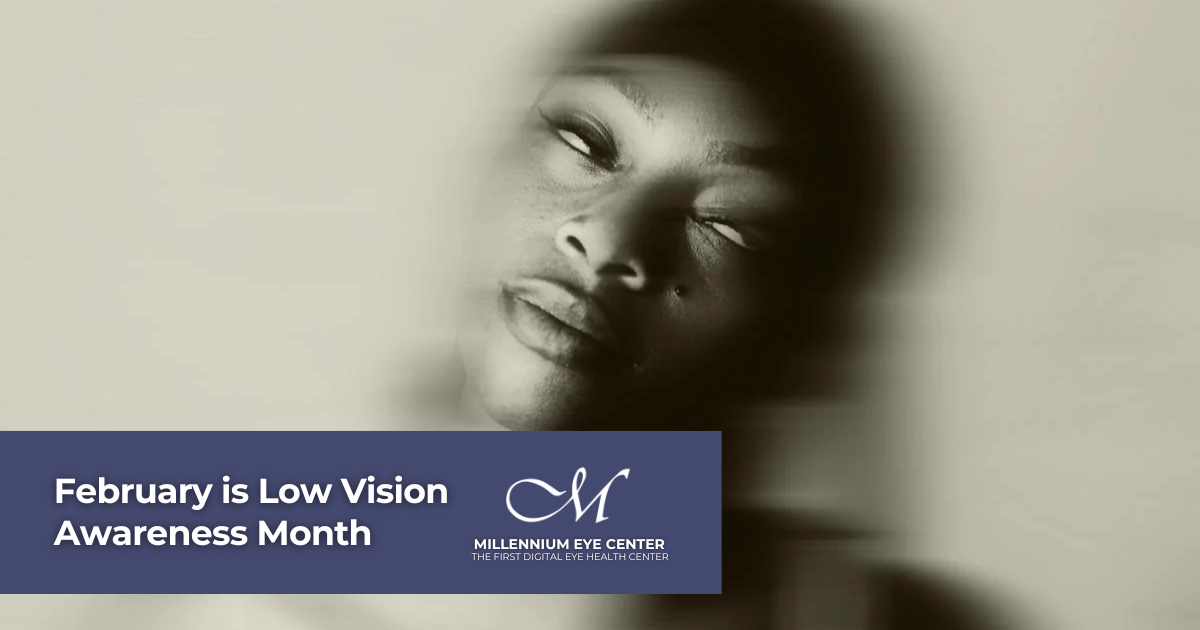Understanding Low Vision and Empowering Better Vision Care
Low Vision Awareness Month in February shines a spotlight on the millions of Americans who live with visual impairments that cannot be corrected with standard eyeglasses, contact lenses, or surgical procedures. Low vision is not a disease but rather a condition caused by various underlying eye or systemic health issues. By increasing awareness, we aim to help individuals understand this condition and access the resources they need to maintain independence and quality of life.
What is Low Vision?
Low vision refers to a significant visual impairment that interferes with daily activities such as reading, driving, or recognizing faces, even with the best possible correction. Unlike complete blindness, people with low vision retain some level of sight. However, they may struggle with specific tasks and require specialized assistance.
Common Causes of Low Vision
- Age-Related Macular Degeneration (AMD): A leading cause of vision loss in older adults, AMD affects central vision, making it difficult to read or see fine details.
- Glaucoma: This condition damages the optic nerve, leading to peripheral vision loss and, in severe cases, blindness.
- Diabetic Retinopathy: High blood sugar levels damage the blood vessels in the retina, resulting in blurred or patchy vision.
- Cataracts: Though treatable with surgery, untreated cataracts can cause significant vision impairment.
- Retinitis Pigmentosa: A genetic disorder that progressively narrows vision and can lead to tunnel vision.
The Impact of Low Vision on Daily Life
Living with low vision can be challenging. Tasks like reading mail, using a smartphone, preparing meals, or navigating unfamiliar spaces may require adaptations. The emotional toll can also be significant, as people may feel isolated or frustrated due to their limitations.
Thankfully, advances in assistive technology, vision rehabilitation, and community support can empower individuals to lead fulfilling lives despite visual challenges.
Tips for Managing Low Vision
- Utilize Low Vision Aids: Tools like magnifiers, electronic reading devices, and screen readers can help with daily activities.
- Modify Your Environment: Improve lighting, use contrast enhancements, and organize belongings for easier access.
- Engage in Vision Rehabilitation: Work with specialists to learn skills and strategies for maximizing remaining vision.
- Prioritize Eye Health: Regular eye exams can detect changes early and allow for timely intervention.
- Connect with Support Groups: Sharing experiences with others can reduce feelings of isolation and provide valuable insights.
Partnering with Millennium Eye Center for Low Vision Care
At Millennium Eye Center, we are dedicated to helping patients with low vision achieve the best possible quality of life. Our team of experienced eye care professionals provides tailored solutions and support to empower our patients and their families.
Take the First Step Today!
If you or a loved one is experiencing visual challenges, let us help you protect and optimize your vision. Click HERE to schedule an eye exam today! Call or text us at 407-292-9812 to take control of your eye health and access the resources you need for low vision care.
Disclaimer
This blog is for informational purposes only and is not a substitute for professional medical advice, diagnosis, or treatment. Always consult your eye doctor or healthcare provider for personalized care and recommendations regarding your eye health.

